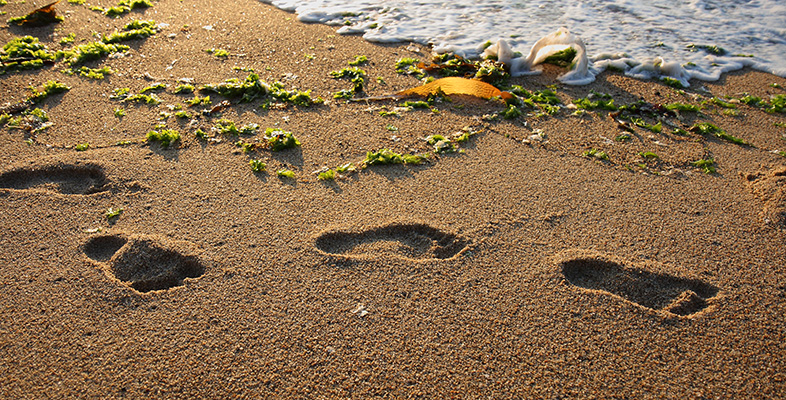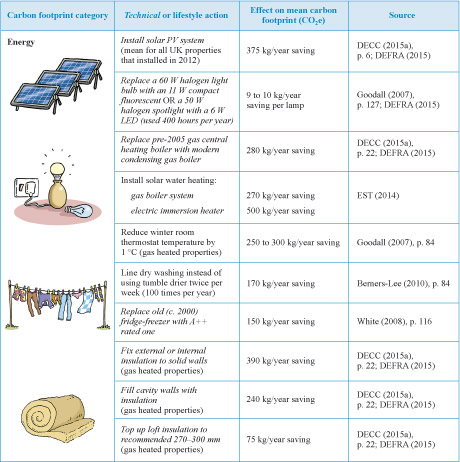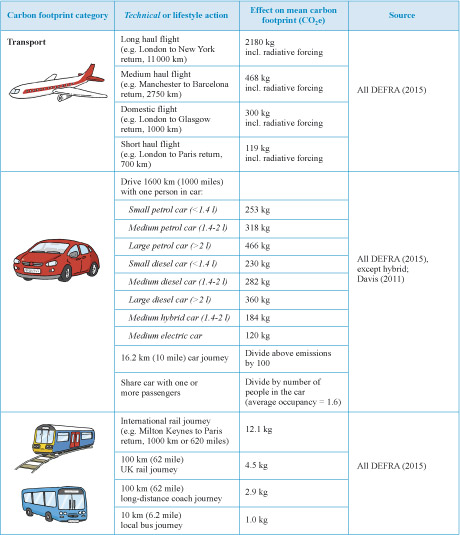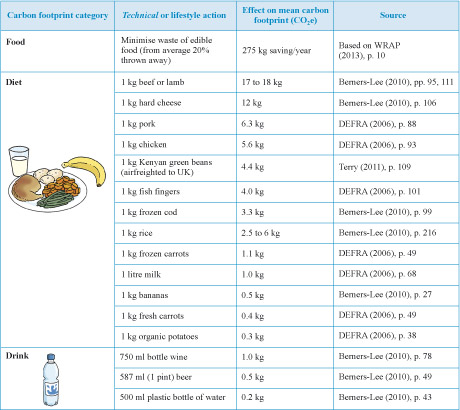4.2 Actions for lighter living
Nobody made a greater mistake than he who did nothing because he could only do little.
In this section, you will look at those actions or changes which are likely to have a big effect on your footprint and those with only a small effect. You will also look at some of the complexities in calculating these effects. This should help prepare you for Activity 11 at the end of this section.
Tables 5a–d provide examples of how different actions affect your carbon footprint and so what you could do or change to reduce it. But be aware that the effects of these actions depend on the assumptions and data sources used. For example, the CO2 savings from filling cavity walls with insulation depend on: the house type and size (detached, terraced, etc.); its heating system (gas, electric, etc.); how the house is occupied; and more. So in Table 5a, instead of providing different savings for different types of household, an overall average of 240 kg CO2e per year from a government survey of a large sample of UK homes on the actual savings from such energy efficiency measures (DECC, 2015a) has been used. You should therefore regard the information in Tables 5a–d as ‘ballpark’ figures rather than exact numbers. It also means that effects of changes you might make in the calculator may not exactly match those in the tables.
You can view Tables 5a–d in their full size by clicking on ‘View larger image’ beneath each table.

Activity 9 Light carbon living
Looking at Table 5a–d, what actions are most likely to substantially reduce your carbon footprint? And which seem to make only a small difference?
The actions fall into two broad groups – technical and lifestyle. For example, installing energy-saving lamps in your home is a ‘technical’ action, while switching lights off is a ‘lifestyle’ (or sometimes referred to as behavioural) action. Sort your list into technical (T) and lifestyle (L) actions.
Discussion
The following actions in Table 5a–d are more likely than others to significantly reduce your carbon footprint:
- avoiding air travel as much as possible (L)
- reducing long car journeys (especially regular ones like commuting); car sharing and/or replacing driving with travel by bus, coach or train (L)
- improving home insulation (especially of older properties) (T) and, if possible, lowering room temperatures (L)
- installing a solar PV system (T)
- reducing consumption of meat (especially beef and lamb), dairy products, and air-freighted fruit and vegetables (L)
- keeping products rather than rapidly replacing or scrapping them (L) (unless a different product is much more efficient, e.g. a hybrid or electric car (T))
- not wasting edible food, and recycling household waste (L).
The following actions are likely to have only a relatively minor effect on your carbon footprint, but may address other important environmental impacts:
- not buying just one new pair of shoes or trousers (L)
- upgrading your mobile phone (L)
- avoiding bottled water and disposable plastic carrier bags (L).



